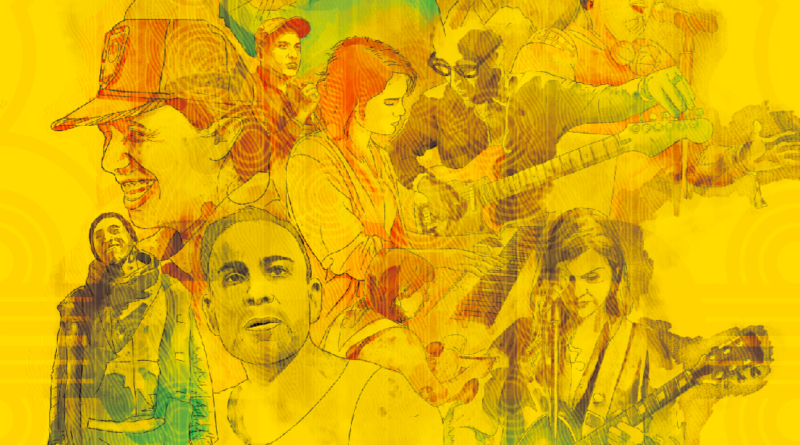INTERVIEW: Sterlin Harjo showcases Native art in new Netflix doc
Image courtesy of ARRAY Releasing / Provided by Organic Publicity with permission.
Sterlin Harjo, the Seminole and Muscogee Creek award-winning filmmaker, has had quite the year in 2021. Reservation Dogs, which he co-created and executive produces with Taika Waititi, is a hit show for FX on Hulu and brings to the audience the episodic stories of four Indigenous teenagers in rural Oklahoma. Netflix also recently released Harjo’s new documentary, Love and Fury, which details the fascinating work of Native artists.
“I’m friends with a lot of Native artists,” Harjo said in a recent phone interview. “Traveling through Indian country as an artist, as a filmmaker you sort of become friends with a lot of different folks, and the same conversations kept coming up. I felt like Native art needed a reset, just a documentary that showed contemporary artists doing work right now and the interesting work that they’re doing. I think in America and the world, there’s this idea of what Native art was, and it’s a very dated view and sometimes stereotypical view. I just thought that it needed an update, and what better way to do it than a documentary.”
Originally Harjo selected four artists to follow. One of the first was Micah P. Hinson, a musician with a dedicated following. The director had heard his music before, but he didn’t know he was Native. “I love that idea that all of Native art and work doesn’t have to fit into a box, and I love that just on the surface you wouldn’t know that he’s a Native artist,” Harjo said. “I had listened to his music before, and I really liked it. I thought that’s a great place to start.”
Another early name was Penny Pitchlynn, a musician who is with the bands Labrys and Broncho. Then, he connected with Haley Greenfeather English, an artist and educator. Harjo said that finds her work vastly interesting, and he wanted to dig deeper to better understand her story and the story of other Native artists.
“So as I was going, I would just collect other artists that were in the sphere, and sometimes I would break off and go follow them,” he said. “I really just let it organically expand that way. I happened to be going to Alaska for another event, and the artist Nicholas Galanin was up there. I had filmed him with other artists two months before, so I broke off and went and filmed with him in his home in Sitka for a couple of days — so really organically expanded.”
The director appreciated the time he spent with these Native artists. He said it was nice to surround himself with like-minded individuals who were creating and expressing simply fo the love of art.
“There was nothing about money involved,” he said. “There’s a freedom in that, and there’s also a fearlessness in that. It’s like jumping off a cliff into unknown waters, and there’s something exhilarating about that when it comes to art. And it just gave me more confidence, especially when moving into making Reservation Dogs. I shot this before Reservation Dogs, but it gave me more confidence, just legitimized what I was doing in my head after working with these like-minded artists.”
He added: “We have this history that we come from, that we’re always negotiating and navigating. … Then there’s a lot of expectations by non-Natives on what our art and our voices should be. A lot of that is created through making money, what sells, and I think that through all of that these artists create in a very loving and community-driven way. I think that’s what is universal between all of these artists is all of them are working in a very community-driven way. That’s what I hope that the film expresses as we expand and break off and talk to different artists. I hope it feels like one big voice, even though it’s very diverse, and there’s a lot of different voices involved. It’s something that expands. There is a collective voice as well.”
Harjo’s time making Love and Fury and Reservation Dogs has changed him, and he is pleased that his own art is finding an audience. He has put a lot of time into his creative endeavors, including previous projects like Four Sheets to the Wind and Barking Water, and TV and film viewers are yearning for more.
“You work a long time, and then all of a sudden you have an audience,” Harjo said. “And that’s a really good feeling. Throughout the years there’s been a lot of doubts on whether there was an audience for Native films and projects, and so it feels really good to prove people wrong and show that there is an audience.”
By John Soltes / Publisher / John@HollywoodSoapbox.com
Love and Fury, directed by Sterlin Harjo, is now available to stream on Netflix. Click here for more information.

